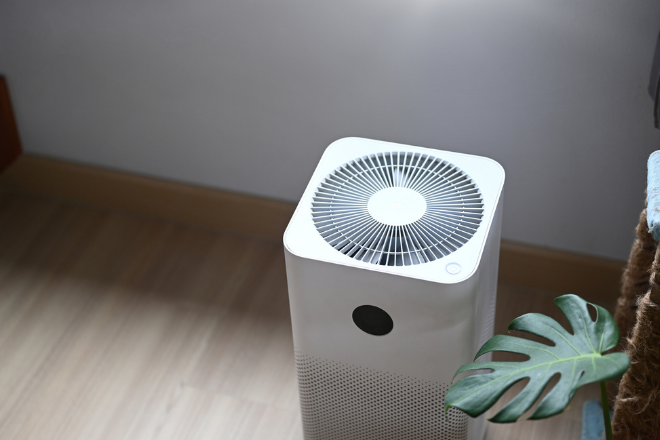Article by Craig Fernandes, CF Healthcare Consulting
As COVID-19 cases continue to drop rapidly, we have seen an about-face in the masking requirements for students and faculty in our schools. Many independent schools have already taken advantage of state and federal emergency funding to pay for COVID testing and personal protective equipment (PPE) in order to meet state and local requirements and allow students to remain in the classroom. Now is the time to take a deep breath and assess what steps your school can take to keep students and staff safe, should the next COVID variant arrive.

We know that one of the best ways to reduce transmission is by reducing the amount of virus particulate in the air. One way of doing so is by using a high-capacity UV/HEPA air purifier. These filters work by using UV-C light to kill the COVID virus while capturing and filtering out the particulate in the air. The amount of air moved through the ventilation system matters as well. The FDA recommends that an air purifier has the ability to exchange the air 5-6 times an hour in order to be affective, and most of the smaller HEPA only retail sized units do not have the capacity to meet that standard. Although their low capital cost makes them seem attractive, they are not designed to kill the virus, only to reduce the particulate count in the air.
As your leadership team considers different technology, you might have this question, as I did, when I worked at an independent school: How are we going to afford to purchase a commercial grade UV/HEPA Portable Air Purification unit when they can cost upwards of $15,000 each?
During my research for Christian Academy of Knoxville, TN we found that the existing GEER and ESSER Federal funds have a clause that allows these funds to be used for PPE, cleaning and sanitizing materials and related supplies — including portable air purifiers — necessary to maintain school operations during and after the COVID-19 pandemic. We made our purchase of two UV/HEPA Air Purifier in August 2021 at the height of the Delta variant and placed one in our nurse’s clinic where we performed COVID-19 testing and one in our cafeteria. We know that COVID is highly transmissible through the air and wanted to provide the most sanitized environment we could in those locations where the air was going to have the highest risk of being compromised. People were unmasked in the cafeteria, while at the nurse’s testing station, there was a high likelihood of traffic with COVID-positive people.
We prioritized purchasing the combination UV/HEPA air purifier in our budget because they provided active 24/7 purification of the air and had the capacity to complete six air exchanges per hour in an 11,000 cubic foot cafeteria and more than 10 air exchanges per hour in our 3,600 cubic foot nurse’s testing clinic. The units came with a small monthly service fee ($250) that covers all maintenance: filter and bulb replacement, 24/7 phone/Zoom technical support, and onsite repair if necessary. We have been very pleased with the equipment from FinsenTech.
Manufacturer Review: We researched several of the manufacturers through internet searching and found that only a few manufacturers offered the combination UV/HEPA air purifiers. Here were our criteria:
- Only one has the capacity to perform the minimum six air exchanges per hour (up to 70,000 cubic feet per hour) for our largest unmasked spaces (cafeterias, locker rooms, and the nurse’s station).
- We also looked for units that were quiet, as we did not want to the to be a distraction in the learning environment. The unit we went with produced only 40 db of noise, which is just above a whisper.
- We were also looked at the reliability of the unit and wanted one that provided coverage for repairs or filter/bulb changes to simplify maintenance. The unit we chose has an easy-to-read digital display that shows how many hours of usable filter time that remains on each of the three filters, and also monitors the number of hours remaining bulb life. Each UV Bulb lasts 9,000 hours, which we estimate will be about 12 months of use if we run the unit 24/7. There is also an optional wi-fi connection to a cloud system that automatically tracks the status of each unit and reports back when service is needed or if a filter needs to be changed.
We learned from our research that many low cost low-capacity air filtration units provide for particulate filtration but do not provide any viable purification/sanitizing of the air itself. We did not believe that these particulate filtration-only units would provide an adequate or effective level of air purification for the large area, highest risk locations that we wanted to address.



